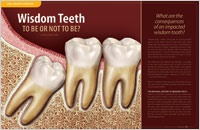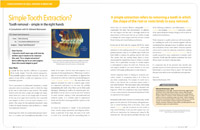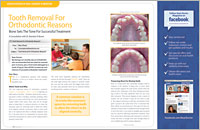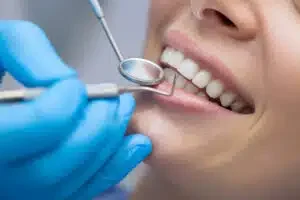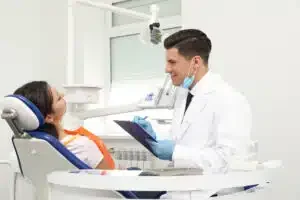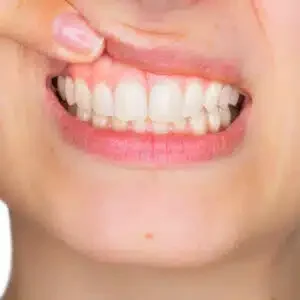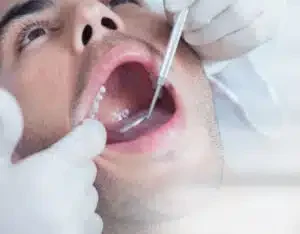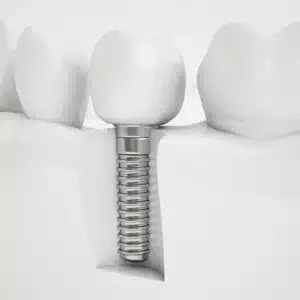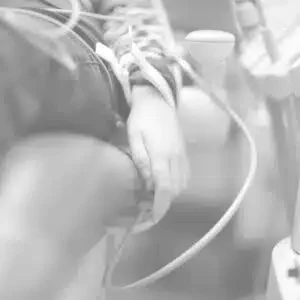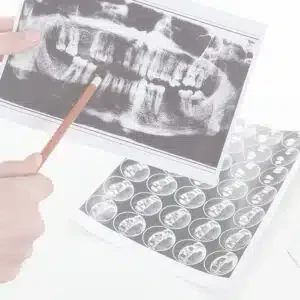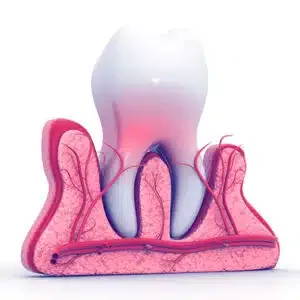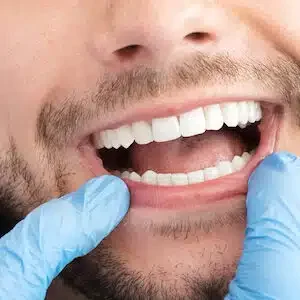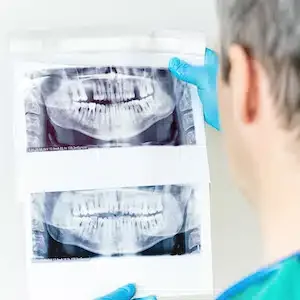TOOTH EXTRACTION
There are times when it is in your best interest to have a tooth removed.
Tooth Removal For Dental Implant
Why Is It Important To See Your Dentist Regularly?
Regular dental visits are essential for maintaining healthy gum tissue and good overall oral health. Seeing your dentist twice annually can help prevent advanced tooth decay resulting in the need for a tooth extraction, or gum disease. Good oral hygiene habits, such as daily brushing and flossing, will help to reduce bacterial levels in your mouth. Improper oral hygiene can result in harmful bacterial levels that may lead to tooth decay and oral infections. Untreated infections can be very serious if not treated quickly. In some instances, antibiotic treatment is insufficient, resulting in the need for prompt surgical tooth removal. It is important to see your dentist regularly to avoid the need for any type of oral surgery and your best chance to retain your natural teeth.
If for some reason, you lost a tooth in an accident, or advanced decay necessitated a tooth extraction, dental implant surgery offers the most natural restorative solution. Dr. Mike, at the Cleveland Implant Institute, is a Board Certified Dental Implantologist who has skillfully placed thousands of implants. There are many benefits to getting a dental implant:
-
Dental implants look and function just like your natural teeth.
-
A dental implant will keep your jaw bone strong.
-
A dental implant is not removed for daily cleaning. Teeth are brushed and flossed as usual.
-
Misalignment, or shifting of teeth will not occur.
-
Provides a nearly final solution for missing teeth.
Possible Reasons For Tooth Extraction
Tooth extraction, or the complete removal of a tooth from the jawbone and gum tissue, may be necessary for several reasons. Here are some possible reasons for tooth extraction:
Severe damage or decay
Tooth decay is one of the most common reasons for tooth extractions. When tooth decay is left untreated, it can cause significant damage to the tooth, leading to infection, pain, and other complications. A severely damaged or decayed tooth may not be able to be saved with other dental treatments, and thus a dental extraction may be necessary.
Infection
In some cases, a tooth may become infected, leading to swelling, pain, and other symptoms. If the infection does not resolve after antibiotic treatment or a root canal, the tooth may likely need to be extracted. Tooth extraction will prevent the spread of the infection to other teeth, and the surrounding gum tissue.
Crowding
Sometimes, teeth may be too crowded, and there may not be enough space in the jaw to accommodate all of them. In such cases, your Fioritto dentist may recommend surgical extraction to create more space in the mouth. Extraction can prevent problems such as misalignment and bite issues.
Impacted wisdom teeth
Wisdom teeth are the last set of molars to emerge in the back of the mouth. When they do not have enough room to grow, they can become impacted or trapped beneath the gum line. This can cause pain, swelling, and infection and overcrowding of the teeth. As a result, you may need to have a wisdom tooth/wisdom teeth removed.
Periodontal disease
Periodontal disease, also known as gum disease, can cause damage to the tissues and bone that support the teeth. The disease may progress to the point where it has caused significant damage to the surrounding tissues. Dr. Mike may recommend tooth extraction to prevent the spread of the disease.
Baby teeth
Baby teeth, also known as primary teeth, may need to be removed for various reasons. The most common reason for primary tooth extraction is extreme tooth decay that cannot be restored with a filling. A baby tooth may also need to be removed if it is impacted, preventing the permanent tooth from emerging properly, or if the child’s mouth is overcrowded.
Cracked tooth
A cracked tooth can cause discomfort, pain, and other dental problems, requiring surgery to remove it. If the crack in the tooth is severe and extends below the gum line, it may not be possible to save the tooth. A cracked tooth may also become infected, leading to pain, swelling, and other symptoms. The infection can necessitate the removal of one or more teeth. Dental implant surgery is the optimal solution to replace lost teeth.
Benefits Of A Tooth Extraction
Tooth extraction is a dental procedure that involves the removal of a damaged, decayed, or infected tooth. Listed below are benefits of having a tooth extracted:
Prevents further damage
Extracting a damaged or decayed tooth can prevent further damage to your teeth, gums, and surrounding bone. The American Dental Association warns a decayed or damaged tooth can cause a domino effect of problems. You should talk to Dr. Mike to discuss your dental implant surgery options.
Reduces harmful bacteria
An infected tooth can harbor harmful bacteria that can spread to other natural teeth, tooth roots or other areas of the body. Removing the affected tooth can reduce the amount of harmful bacteria in your mouth and improve your overall oral and physical health.
Alleviates pain
If you have a severely damaged or infected tooth, it can cause significant pain. Having the tooth extracted is a minor surgery that can alleviate the dental pain and improve your quality of life.
Improves appearance
A decayed or damaged tooth can affect your smile and overall appearance. Dr. Mike will perform tooth extractions when necessary. Having a dental implant placed after a tooth extraction will improve your smile and self-confidence.
Steps Prior To Tooth Extraction
Before a tooth extraction procedure, several steps are typically taken to ensure the procedure goes smoothly and safely. Here are some of the most common steps:
Dental assessment
Dr. Mike will assess your affected tooth and gums to determine the extent of the damage and the best course of treatment. He will advise whether or not an extraction is required.
X-rays
The staff at Cleveland Implant Institute may take dental X-rays to enable Dr. Mike to determine the position and condition of the tooth and its structures. Dr. Mike will also evaluate if there is sufficient bone to be a dental implant candidate.
Medication review
Be sure to inform your Dr. Mike about any medications, vitamins, or supplements you’re taking, as some of these may need to be adjusted before the extraction.
Anesthesia
Before a tooth is extracted, Dr. Mike will administer local anesthesia to numb the area. Patients with high dental anxiety can be treated with inhaled, oral or IV sedation. The type of sedation will be dependent in a patients level of anxiety.
What Happens During A Tooth Extraction?
Loosening the Tooth
Using specialized dental instruments, the Dr. Mike will gently loosen the tooth from its socket, rocking it back and forth to ease it out.
Removing the Tooth
Once the tooth is loosened, the Dr. Mike will remove it from the tooth socket.
Cleaning the Socket
After the tooth is removed, Dr. Mike will clean the tooth socket of any debris.
Stitches
If necessary, the Dr. Mike may use stitches to close the wound to promote healing.
Care After Removal Of A Tooth
After the removal of a tooth, there are several dental care steps to follow including:
Keep the extraction site clean
After the surgical procedure, and in the comfort of your home, you will be instructed to gently rinse the area with an antimicrobial mouthwash two to three times a day to prevent infection. Avoid brushing the extraction site.
Control bleeding
To minimize the chance of bleeding, a gauze pad will be placed on the extraction site. You will be instructed to bite down on a gauze pad for 30-45 minutes.
Manage pain and swelling
Apply an ice pack to the affected area to reduce swelling, and take pain medication as prescribed. Dr. Mike will explain how long to apply the ice pack.
Avoid certain foods
Avoid chewy, sticky, hard and crunchy foods that can dislodge the blood clot and delay healing. Be sure to eat soft foods during the healing process after a dental procedure.
Rest and limit physical activity
Rest for at least 24 hours after the extraction procedure and limit physical activity for the next few days.
Attend follow-up appointments
Attend any follow-up appointments with the Dr. Mike to monitor healing and to ensure there are no complications. An implant abutment or bone graft may recommended for a future dental implant.
Dental Implants After Tooth Extraction
Dental implants are surgically placed in the jawbone to serve as the roots of missing teeth. They are a nearly final solution that fuses with the jawbone and prevents slipping, noise, and bone damage, unlike dentures or fixed bridgework. A patient may choose to get dental implants to replace the missing tooth or teeth. This may be especially necessary if there has been bone loss due to periodontal disease. Dental implants may be a suitable option if there is enough bone mass to allow for the safe placement of an implant. For patients where sufficient bone mass is an issue, Dr. Mike has alternative implant options.
Related Articles
